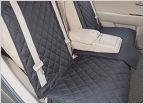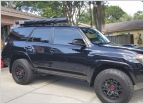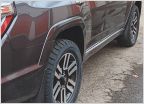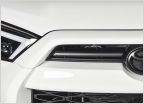-
Welcome to 4Runners.com!
You are currently viewing as a guest! To get full-access, you need to register for a FREE account.
As a registered member, you’ll be able to:- Participate in all 4Runner discussion topics
- Transfer over your build thread from a different forum to this one
- Communicate privately with other 4Runner owners from around the world
- Post your own photos in our Members Gallery
- Access all special features of the site
Starter Removal on Toyota 4Runner - The Easy Way
Discussion in '5th Gen 4Runners (2010-2024)' started by strannik, Feb 7, 2024.


 I need ideas for a fan
I need ideas for a fan Interior detailing tips/tricks for Softex and 5th Gen 4Runners in general
Interior detailing tips/tricks for Softex and 5th Gen 4Runners in general Dog Proofing the 5th Gen 4Runner... Best products
Dog Proofing the 5th Gen 4Runner... Best products Mud flap recomendation
Mud flap recomendation And So it Begins
And So it Begins












































































